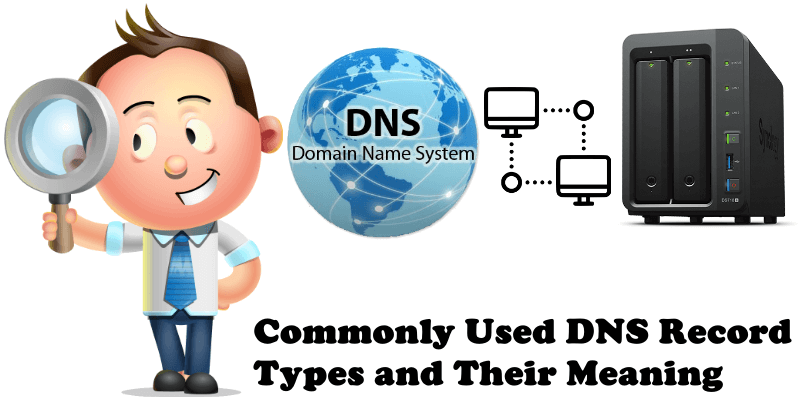
If you have a Synology NAS and have decided to host your website from home by registering your own domain name through one of the many services on the net (such as GoDaddy), it’s useful to know the most widely used DNS record types, and their purpose:
- A – A records specify IP addresses corresponding to your domain and its subdomains.
- MX – MX records specify where the emails for your domain should be delivered.
- CNAME – CNAME records specify redirects from your domain’s subdomains to other domains / subdomains.
- TXT – these records are used to store text-based information related to your domain. One of their most common uses is for SPF data. SPF, or Sender Policy Framework, is an attempt to control forged e-mail. You can use TXT record to verify your website using Google Search Console.
- AAAA – AAAA record maps a domain name to the IP address of the computer hosting the domain. An AAAA record is used to find the IP address of a computer connected to the Internet from a name. Remember, an AAAA (pronounced quad A) record is a DNS record that maps to an IPv6 address.
- SRV – SRV records help with service discovery. For example, SRV records are used in Internet Telephony to define where a SIP service may be found. An SRV record typically defines a symbolic name and the transport protocol used as part of the domain name. It defines the priority, weight, port, and target for the service in the record content.
- CAA – The Certification Authority Authorization (CAA) record is used to specify which certificate authorities (CAs) are allowed to issue certificates for a domain. The purpose of the CAA record is to allow domain owners to declare which certificate authorities are allowed to issue a certificate for a domain.
- NS – NS record stands for “name server” and this record indicates which DNS server is authoritative for that domain (which server contains the actual DNS records). A domain will often have multiple NS records which can indicate primary and backup name servers for that domain, for example GoDaddy.
All your domain’s DNS records are stored in its DNS zone. Where its active DNS zone is located is determined by the domain’s name servers. In turn, a domain’s name servers are set with the domain’s registrar.
This post was updated on Wednesday / February 5th, 2020 at 10:15 PM
